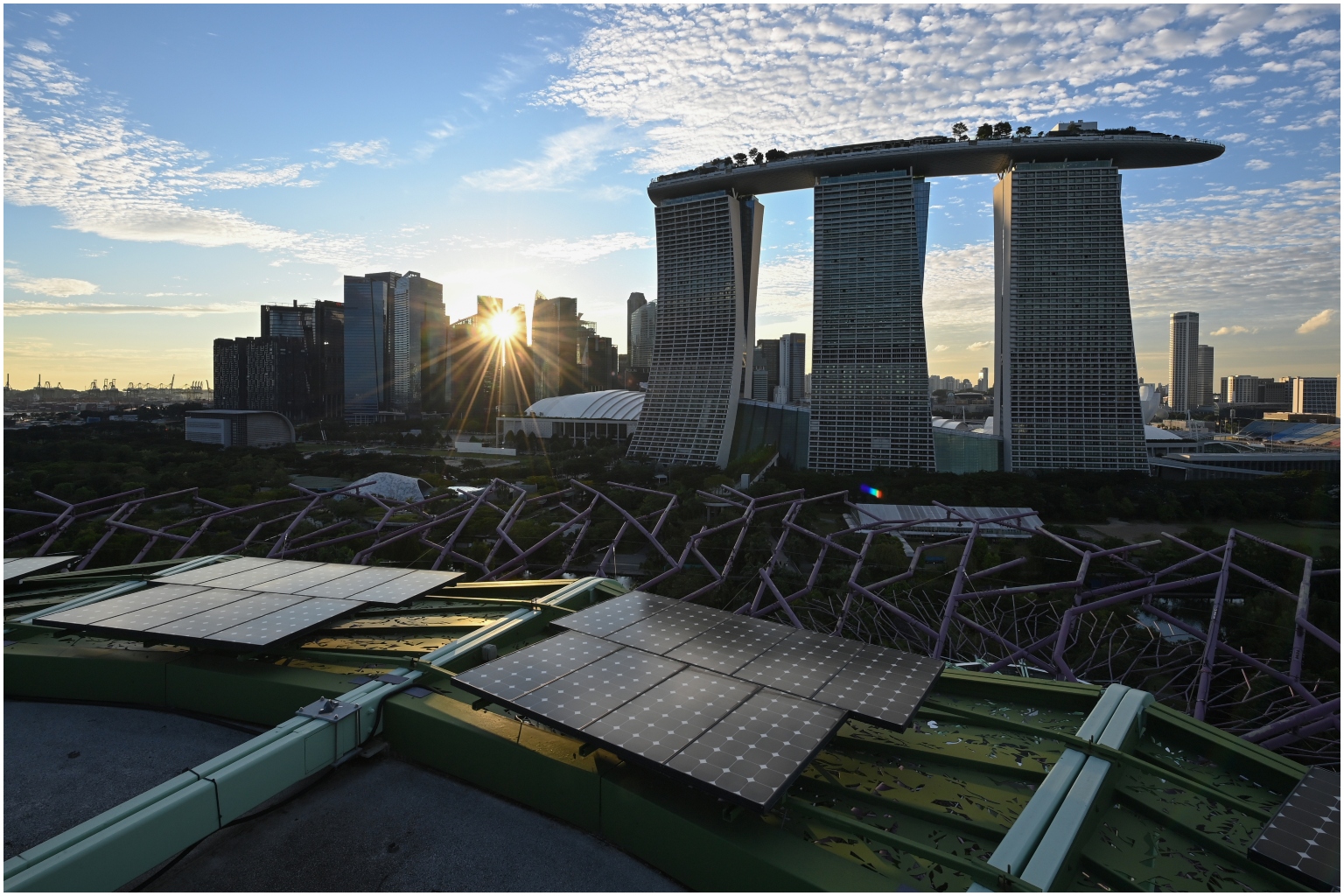Low-carbon hydrogen fuel tech in S'pore could be fully commercialised in 2030
Sign up now: Get ST's newsletters delivered to your inbox

Clean fuel could play a bigger role in everyday life, from powering vehicles to power generation.
PHOTO: ST FILE
Follow topic:
SINGAPORE - New technology to transport and extract low-carbon hydrogen fuel to Singapore is being developed in the Republic and could be implemented on a national scale as early as 2030.
This means the clean fuel could soon play a bigger role in everyday life - from powering vehicles to power generation.
Companies such as port operations group PSA Corp are looking to adopt hydrogen as a fuel for their vehicles to lower their carbon footprint, while energy company City Energy is hoping to use green hydrogen for town gas production.
A consortium, comprising the Nanyang Technological University (NTU), Japanese engineering firm Chiyoda Corp, the National University of Singapore and other industrial players, could bring about a steady supply of hydrogen into Singapore and accelerate its commercial use here.
This is done via liquid organic hydrogen carriers (LOHC), which are organic compounds that can be chemically induced to store hydrogen for transport. Once the LOHCs reach their destination country, the hydrogen is extracted for usage.
Dr Xu Rong from NTU's School of Chemical and Biomedical Engineering told The Straits Times that low-carbon hydrogen could first be produced overseas using electricity generated from renewable resources such as solar and wind energy, before it is transported to Singapore using LOHCs.
"The production could be done in countries like Australia and Chile where renewable energy is in abundance, and diversifying the sources of Singapore's energy imports ensures the lowest cost and minimal supply risk of renewable energy," said Dr Xu.
Singapore has announced plans to trial the import of low-carbon or clean electricity from Malaysia, Indonesia and Laos. The Republic plans to import 30 per cent of its energy from low-carbon sources by 2035.
Green hydrogen, which is produced by splitting water into hydrogen and oxygen by using renewable electricity, emits no carbon dioxide during the production process.
Hydrogen does not emit any carbon dioxide when it is burned, thereby making it a clean fuel.
A promising type of LOHC - used by Chiyoda - involves adding hydrogen to an organic compound known as toluene, which produces another liquid compound known as methylcyclohexane (MCH).
MCH can then be easily transported from overseas production facilities in conventional petroleum tankers as it is maintained in its liquid state at ambient temperature and pressure.
Without a carrier like MCH, hydrogen will need to be pressurised and cooled to minus 253 deg C and transported as liquid hydrogen in tankers that maintain the environment for it to stay in its liquid state.
Once the MCH reaches local shores, the hydrogen is extracted via another chemical reaction known as dehydrogenation, leaving behind toluene as the by-product. Toluene can then be recycled as a raw material for producing MCH.
This technological innovation developed by Chiyoda is known as Spera Hydrogen.
In order to reduce the cost of hydrogen for commercialisation, Dr Xu and her team have been looking at improving the performance of the catalyst - a substance that speeds up the chemical reaction - and the reactor needed for the dehydrogenation process.
For example, improving the stability of the catalyst such that it has a longer lifespan could help to drive down costs.
Low-carbon hydrogen currently costs more than US$3 (S$4) per kg, and its price must drop to around US$2 per kg to be comparable to hydrogen generated from fossil fuels, said Dr Xu.
The extracted hydrogen can be used in various sectors, such as transport, and town gas and power generation.
For hydrogen-powered vehicles, extremely pure hydrogen - of more than 99.9 per cent purity - is required, said Dr Xu. The presence of contaminants could impact the performance of the fuel cell.
Once the cost of hydrogen production and transport has been reduced to a certain target in lab settings, the technology will then be trialled at a larger scale with PSA, one of the industry players in the consortium, Dr Xu said.
"This test bedding is important because we want to ensure the operational feasibility of this technology in Singapore," she added.

In collaboration with all industrial members of the consortium, Professor Iftekhar Abubakar Karimi from NUS' Department of Chemical and Environmental Engineering will be leading a study on integrating hydrogen transport and extraction technology with the processes on Jurong Island, such as for the power generation and petrochemicals industries.
These research projects will help the consortium to semi-commercialise the hydrogen technology from 2025 or 2026, and fully commercialise it from 2030.
City Energy, which is part of the consortium, is also hoping to develop a long-term sustainable supply chain of green hydrogen for town gas production, it said in a separate statement last Wednesday (March 30).
As the sole piped town gas provider to more than 870,000 homes and businesses islandwide, the company currently is the largest carrier of hydrogen molecules as it produces what is known as grey hydrogen using the process of steam-methane reforming.
During this process, natural gas is used in the hydrogen production, producing carbon dioxide as a by-product.
Therefore, the company is studying the feasibility of either extracting hydrogen from MCH, or importing liquid hydrogen from Western Australia into Singapore.
The company hopes to conclude feasibility studies by this year and determine the most commercially suitable green hydrogen deployment option.

